The 17th of December 2023 marks the 120-year anniversary of what is widely considered the first aeroplane flight, which was achieved by none other than the Wright brothers. But was it really the first flight in history?
Indeed, on 17 December 1903, after several failed attempts, the younger Wright brother, Orville, climbed aboard a heavier-than-air vessel called the Flyer and flew for 12 seconds, travelling a distance of 36 metres. From today’s perspective, it may not seem like much, but it set a meaningful precedent for the nascent aeronautical sector.
There are myriad ways to define the first flight in history. Different aviators may hold claim to the title, depending on which criteria are used.
However, calling it the first flight has generated some controversy. Many believe that the first flight was actually achieved by someone other than the Wright brothers. Alberto Santos Dumont, Samuel Langley, Clément Ader, Glen Curtiss and Gustave Whitehead top the list of pioneers who aspire to this high distinction. There are several key factors in determining who deserves the title: what is considered an aeroplane, what is considered flight, whether there were registered patents, whether a certification of flight was issued by an official organisation and whether there were witnesses other than a handful of friends and family members. There are many ways to look at the question and just as many possible answers.
If we define flight as getting one’s feet off the ground and surviving the landing well enough to talk about it afterwards, we can go all the way back to the year 875, when Abbas Ibn Firnas of Al-Andalus launched himself into the air from the Arruzafa hills in Córdoba (Spain). Of course, his flight was achieved by gliding, and he didn’t have much control in the air, but it was flight nonetheless. More than a century later, in 1010, Eilmer de Malmesbury launched another glider from a tower in his abbey, flying about 200 metres in Wiltshire (United Kingdom). Both men broke some bones on landing, but the truth is that they flew and lived to tell the tale.
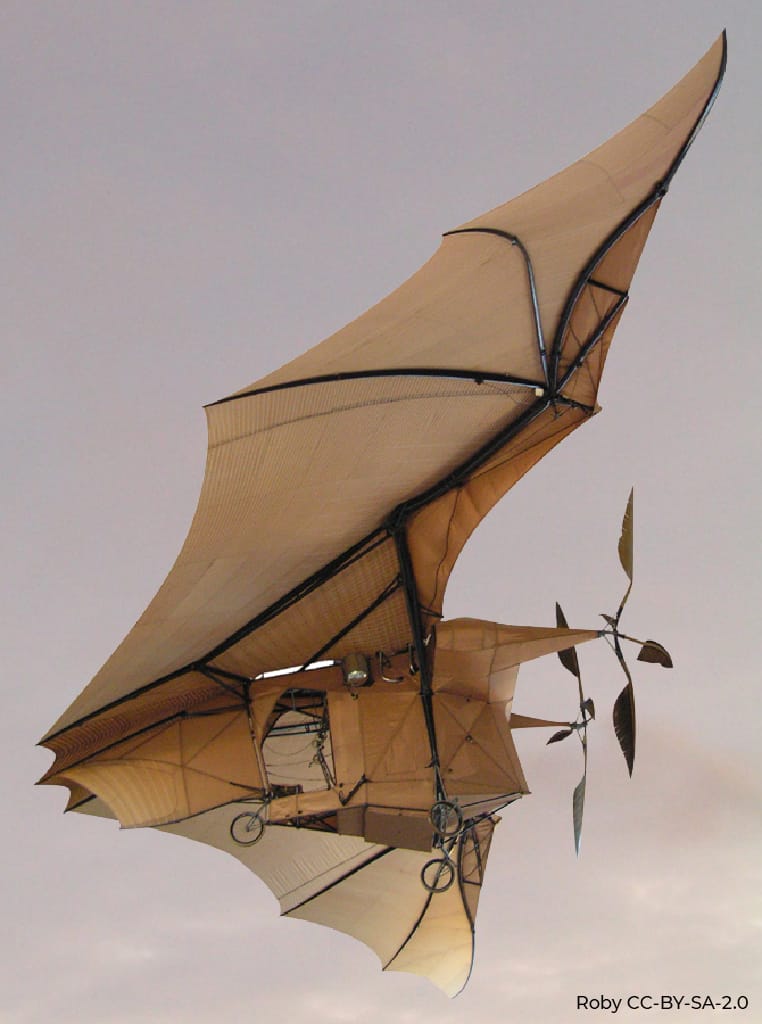
If we want to focus on the first self-propelled and piloted heavier-than-air device to rise off the ground for a few metres, we should look to French engineer Clément Ader. It is generally accepted in the aeronautic community that on 9 October 1890, Ader managed to take off and fly his Éole aircraft. This “hop” was not at all controlled, and he barely managed to cover 100 metres, flying a few centimetres off the ground. The event ended with a crash landing that destroyed the vessel. Nevertheless, today it is considered to be the first “flying machine”. It used most of the same concepts as present-day aeroplanes, although flight control was an issue that Ader was not able to solve.
Some years before him, the French inventor Alphonse Pénaud managed to fly his model aeroplanes, but on a small scale. In fact, today he is considered the father of the model aeroplane. On 18 August 1871, he flew one of his models in public. It was powered by rubber strips that made the propellers rotate. It flew almost 60 metres in 11 seconds. We must keep in mind that in this case, the aircraft was neither piloted nor controlled. However, it influenced later aeronautic pioneers including George Cayley, Samuel Langley and the Wright brothers themselves, who were inspired by some of Pénaud’s designs.
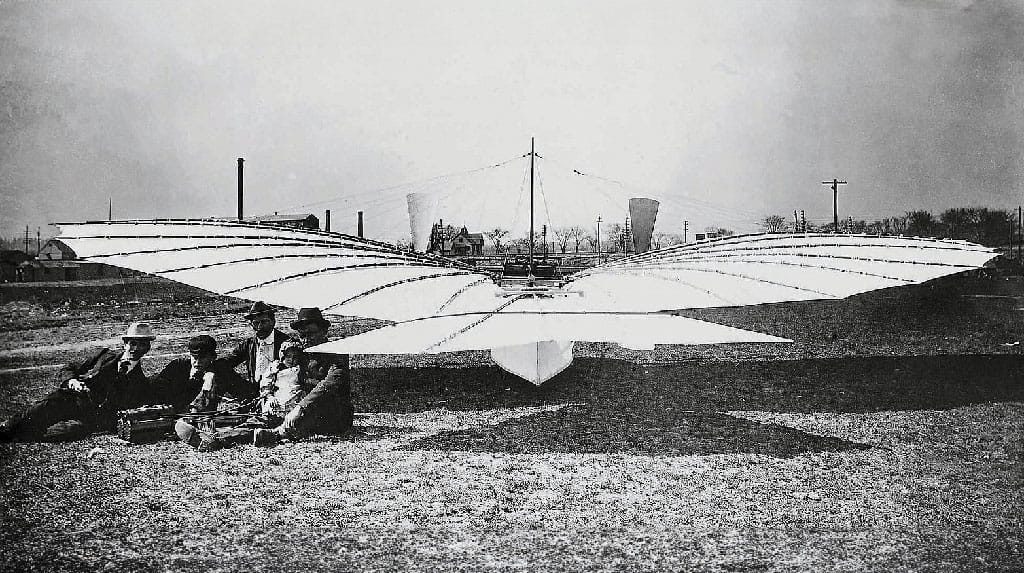
The first piloted and engine-powered flight of which there is written evidence took place on 14 August 1901 in Connecticut (United States) at the hands of German engineer Gustave Whitehead. Inspired by the designs of his fellow countryman Otto Lilienthal, Whitehead made some adaptations and added a small engine. His longest flight travelled over 2 kilometres and reached a height of around 60 metres after taking off using its own power. For the first of his flights, Whitehead used a light 2-cylinder, 20-horsepower (15-kW) engine that he made himself. He increased its power for later flights. For take-off, the engine was used to accelerate the wheels until, at a given moment, the pilot used a mechanism to switch the force to the propellers, thus generating the thrust necessary to stay airborne.
Although he made headlines in various local and national media outlets, Whitehead never registered his advances, so he was not able to win any patent lawsuits. In fact, he tried to fight for some of his advances to be recognised once it became clear that the emerging aviation business might have a future, but to no avail. Many people questioned Whitehead’s 1901 and 1902 flights, including the Wright brothers’ defenders, arguing that there was no visual evidence that they took place. But the truth is that the flights were covered in many media outlets at the time, and multiple people gave sworn testimonies that they had seen some of his devices fly.
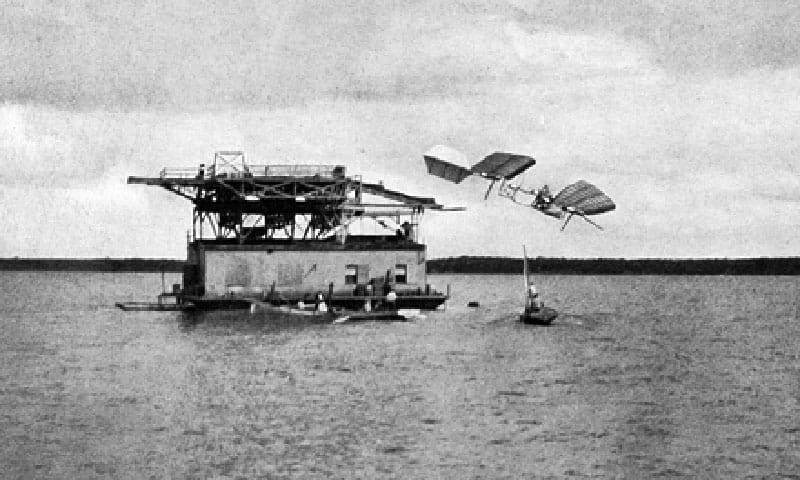
Around the same time, American physicist and inventor Samuel Langley designed and built his first aeroplane, which had a steam engine but was unpiloted. Langley endeavoured to develop a piloted aeroplane with financial support from the government and the Smithsonian Institution, of which he was the secretary. He equipped his “Aerodrome A” model with a 53-horsepower gasoline engine and attempted to launch it using a catapult he had built on a barge. The vessel had a control system for slope and turning, but not for inclination, so the pilot had to distribute weights to keep the aeroplane at the correct angle. Langley’s models flew years later at the hands of another, but on his last attempts on 7 and 8 December 1903, his aircraft fell into the Potomac River without achieving lift-off.
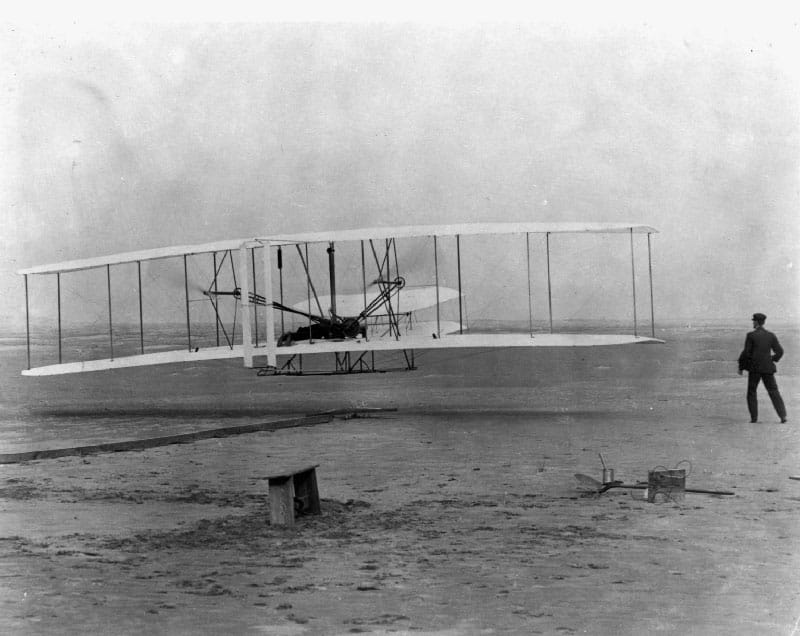
Ten days later, on 17 December 1903, brothers Orville and Wilbur Wright flew their aeroplane at the sand dunes of Kitty Hawk in North Carolina (United States). Since 1900 they had invested many hours of work and just over 2,000 dollars to reach that climatic moment. Their Flyer I model, a 35-kg aeroplane built with basic materials (fir and ash wood for the structure and muslin cloth for the wings) and powered by an engine with just 12 horsepower, flew almost 40 metres in 12 seconds. They continued improving their models, and in October 1905 they managed to control their aircraft to the point where they could fly a predetermined path and stay airborne for more than half an hour.
It is noteworthy that the Wright brothers were the first to understand that a propeller is actually a rotating wing and must be aerodynamic. The propellers they made for their 1903 flight were almost as efficient (approximately 70%) as the wooden propellers we can make today, which is an outstanding achievement.
The truth is that their first flight went practically unnoticed by the media and public opinion. It was witnessed by only a handful of close collaborators. Interestingly, the Wright brothers themselves were partly responsible for their lack of publicity because they wanted to keep working without witnesses who might copy their ideas. They wanted to have enough time to perfect their device without making things easier for other pioneers. Their ongoing business endeavours and possible government contracts were, in fact, the key to that zeal.
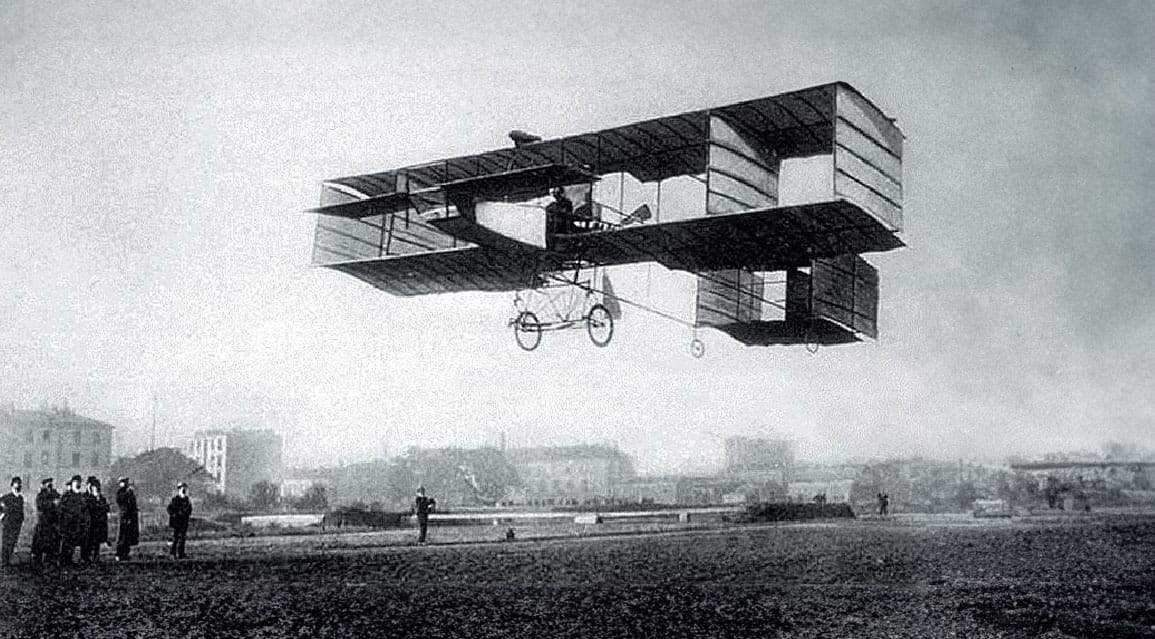
The big debate over who was the first to fly (which is still going on today) began with the work of Alberto Santos Dumont. In reality, if we consider an “aeroplane” to be a heavier-than-air machine that can take off under its own power (without assistance), return to its starting point and land smoothly, that’s just what Santos Dumont’s 14-bis model did on 23 October 1906.
The 14-bis achieved lift-off by itself without the help of launching devices and flew 60 metres in 7 seconds, all in front of more than a thousand spectators. Furthermore, the 14-bis made the first flight in history to be certified by an aeronautic institution, the Aéro Club de France.
However, the Wright brothers registered their patent before Santos Dumont.
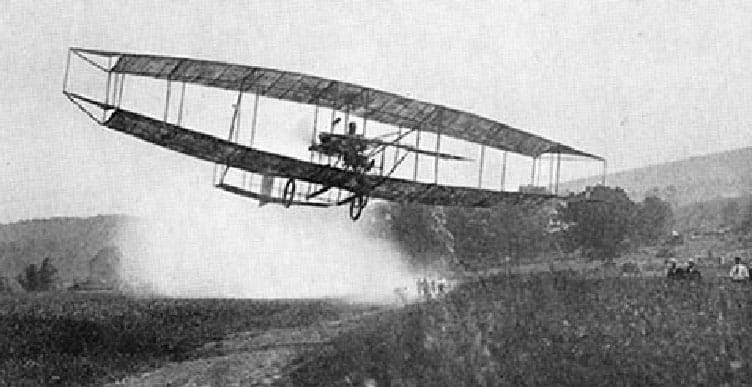
On 4 July 1908, Glenn Curtiss, a Hammondsport engine manufacturer, made what is considered the first previously announced public flight in the United States with his June Bug aircraft. The flight earned him a trophy from Scientific American. Curtiss was a member of the Aerial Experiment Association (AEA), created by Alexander Graham Bell. One month later, the Wright brothers made their first public flights after having greatly perfected the various phases of the flight.
This concludes our overview of some of the pioneers at the top of their field during the years in which it became possible to fly a heavier-than-air aircraft. Since then, the range of contributions and achievements in aviation has continued to grow exponentially.
Needless to say, in the early 20th century, the fight for patents related to aeroplanes and flight systems was intense. Looking beyond the important paperwork, it is well worth considering that although one of the pioneers mentioned in this article may deserve the glory of having made the first flight, it is no less true that the dozens of other pioneers who came before them also made contributions that made it possible to reach the point where a heavier-than-air vessel could take off, fly and finally land in a controlled manner.
With all that said… Who was the first to fly?


